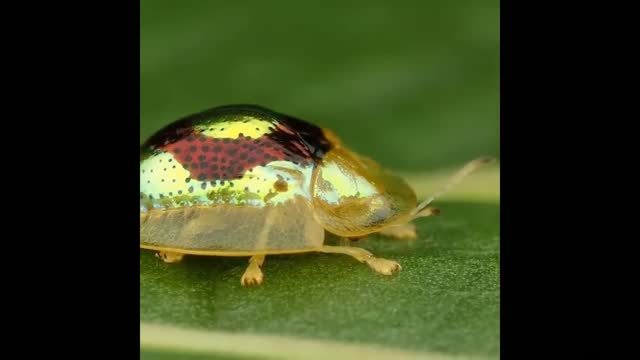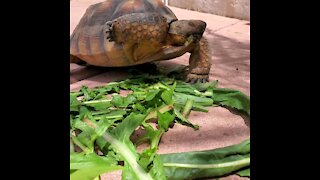Premium Only Content

Tortoise Beetle & Golden ,Tortoise from Ecuador
Cute Tortoise Beetle & Golden,Tortoise from Ecuador.
Adorable Tortoise Beetle & Golden Tortoise.
But make no mistake they are killers.
Ever seen a tortoise the size of a fly? How about a golden one that can actually fly? Well, today’s your lucky day, as you get to discover one of nature’s shiny treasures – the golden tortoise beetle.
Before you open a fresh tab to search if these adorable critters are real or just the result of digital editing, make sure you use the species scientific name, aspidimorpha sanctaecrucis, as “golden tortoise beetle” is a really common name shared by a number of beetles, like charidotella sexpunctata, among others. What makes this species of beetle special is that the gold pattern on their transparent protective carapace actually makes them look like tiny tortoises.
Few insects boast a truly gold-colored body. The Golden Tortoise Beetle is even more remarkable because it can actually change its coloring at will thanks to microscopic cavities in its cuticle that house pigmentation. The beetle's metallic sheen can be dulled, and that lovely gold can become brown. Upon death, the metallic glimmer fades. Like a tortoise, the body of the beetle is humped, or rounded, as if the wing coverings were actually a shell. The bottom edges of the beetle's eltyra are transparent, like glass.
The shiny, metallic Golden Tortoise Beetle is one of many Tortoise Beetles that feed on popular garden vines. Morning glory, sweet potato vines, bindweed and other plants in the Convulvulaceae family. The adults and their larvae chew on leaves and flowers, giving the plants a less-than-perfect appearance. The amount of damage is mild though, and it rarely causes the plant to die. Many gardeners keep the beetles around just to look at them.
Eggs are laid in the spring. Larvae hatch and immediately begin eating the foliage of the plant they are on. They are round like adults, but are usually a pale greenish color and have a fringe bordering their entire body. They will molt a few times before taking on their adult form. Larvae tend to drag their old 'skins' at their rear until they finally pupate on a leaf. The adults feed in the autumn and overwinter.
-
 0:15
0:15
Alpha1Over137
4 years agoDesert Tortoise
491 -
 0:53
0:53
theshamansgift
4 years agogopher tortoise stroll
41 -
 1:57:04
1:57:04
Steven Crowder
4 hours agoAdios & Ni Hao: Trump Sends Abrego Garcia to Africa But Welcomes 600K Chinese to America
187K169 -
 LIVE
LIVE
The White House
4 hours agoPresident Trump Participates in a Cabinet Meeting, Aug. 26, 2025
2,731 watching -
 LIVE
LIVE
Rebel News
59 minutes agoCarney's flawed LNG deal, Libs keep mass immigration, Poilievre's plan to fix it | Rebel Roundup
253 watching -
 27:39
27:39
Crypto.com
4 hours ago2025 Live AMA with Kris Marszalek, Co-Founder & CEO of Crypto.com
54.2K4 -
 LIVE
LIVE
TheAlecLaceShow
1 hour agoMAGA Pushback Against Flag Burning EO & 600K Chinese Students | Cashless Bail | The Alec Lace Show
96 watching -
 1:09:18
1:09:18
SGT Report
16 hours agoBIOHACKING 101: MAKING BIG PHARMA IRRELEVANT -- Dr. Diane Kazer
21.5K19 -
 DVR
DVR
JuicyJohns
5 hours ago $1.49 earned🟢#1 REBIRTH PLAYER 10.2+ KD🟢
42K -
 LIVE
LIVE
The Mel K Show
2 hours agoMORNINGS WITH MEL K - The Future of the Constitutional Republic: Local Action for National Impact 8-26-25
716 watching